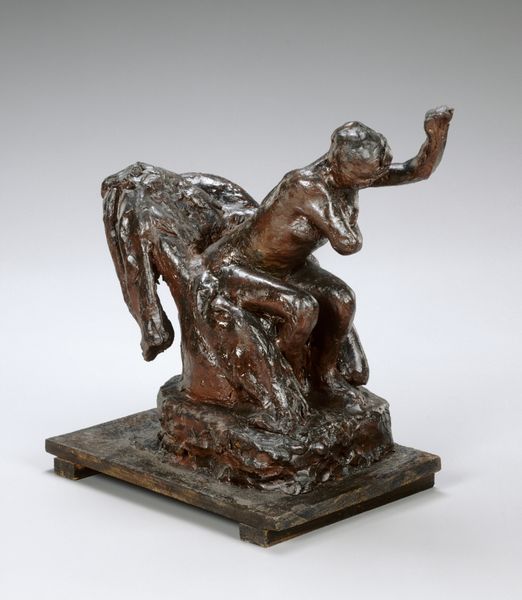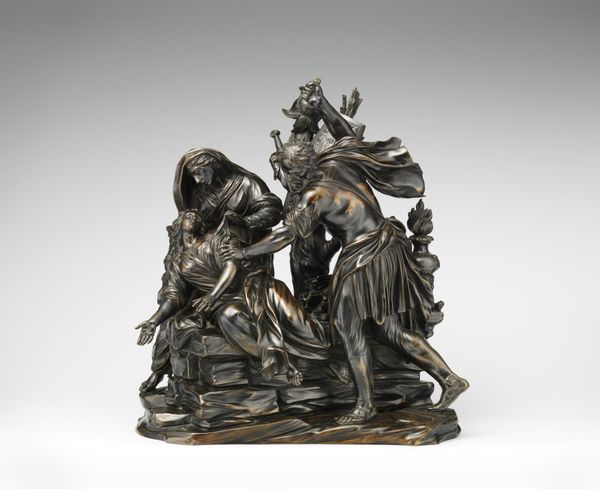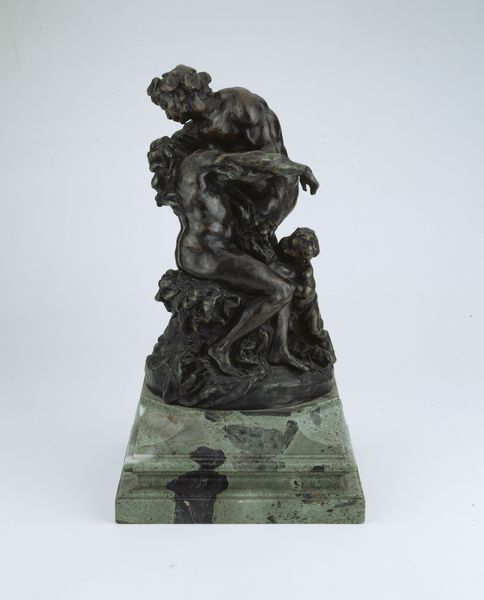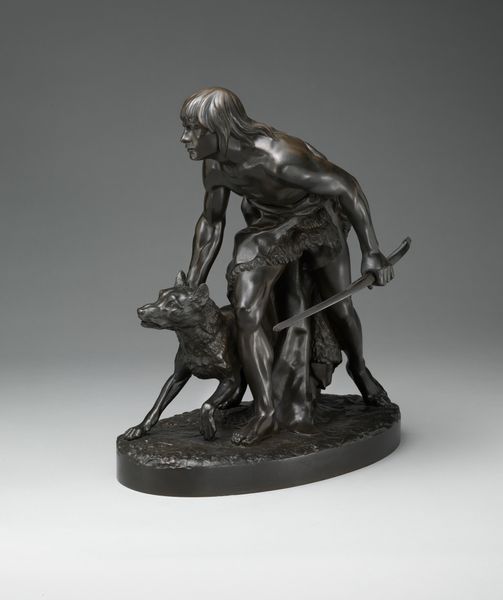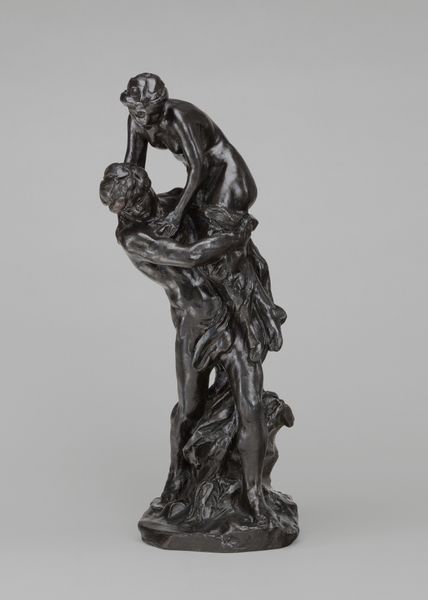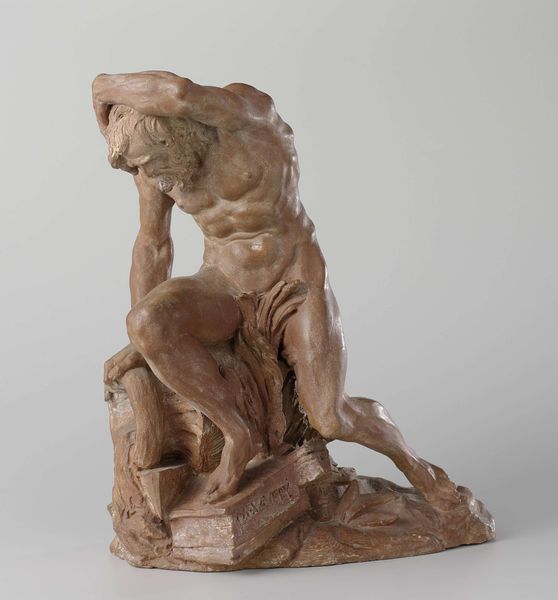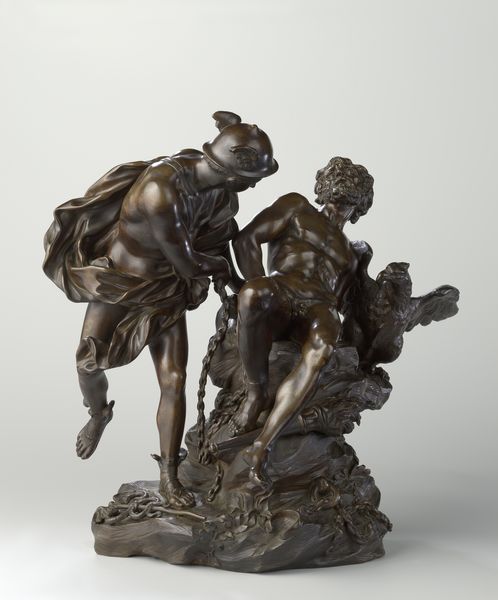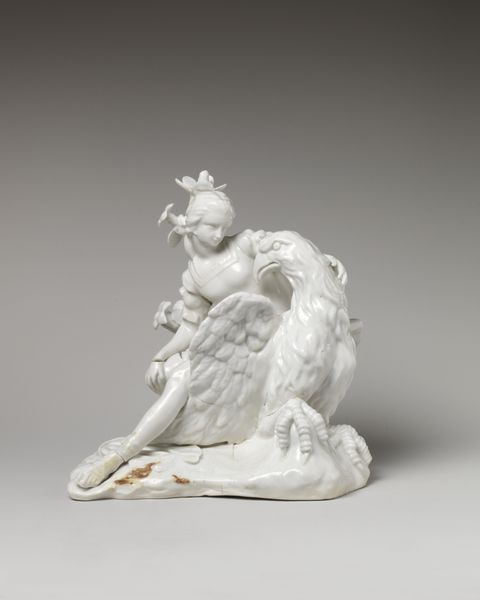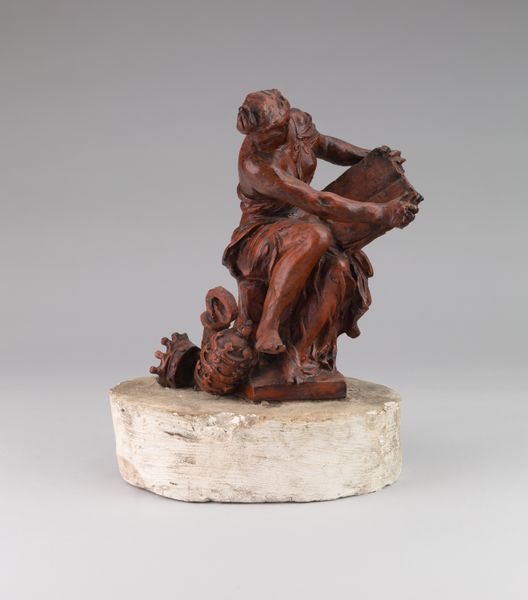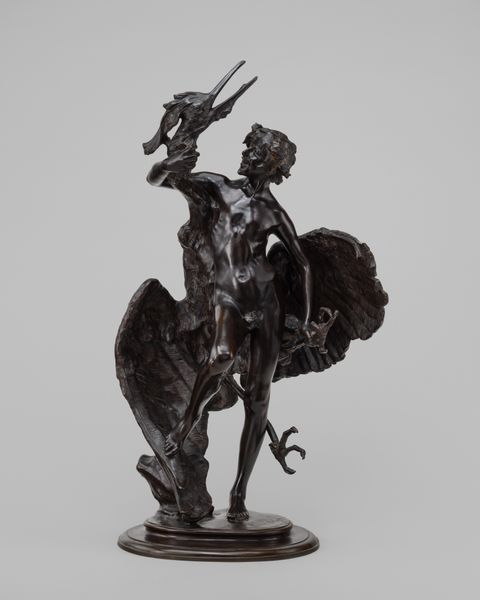
silver, metal, sculpture
#
neoclacissism
#
silver
#
narrative-art
#
metal
#
sculpture
#
figuration
#
ancient-mediterranean
#
sculpture
#
history-painting
Dimensions: 5 9/16 x 7 x 5 1/16 in. (14.13 x 17.78 x 12.86 cm)
Copyright: Public Domain
Editor: This silver sculpture, "Hercules and the Bull," dates back to around 1820. The first thing I notice is the contrasting textures and the dynamic tension between the figures. What visual elements stand out to you? Curator: Formally, the interplay between the curves of the bull and the angularity of Hercules' body establishes a fascinating dialectic. Note how the sculptor utilizes the reflective quality of the silver to highlight the musculature, emphasizing the inherent strength and virility. Consider how this tension influences our understanding? Editor: That's a great point about the reflection. It makes the muscles really pop. So, what would you say the structure communicates, without considering its historical context? Curator: Stripped bare, it manifests a visual choreography of power versus submission, rendered through precise anatomical detail. Observe how the twisting pose of Hercules generates an impression of immense exertion. Semiotically, this represents a struggle between civilization and the untamed. Does this structural approach offer a meaningful entry point for the viewer? Editor: Definitely. Focusing on form allows me to see beyond just the story being depicted, and appreciate the artistic choices. It seems that this is less a historic representation and more an abstract interpretation. Curator: Precisely! It underscores that the sculptor's emphasis transcends mere replication, channeling inherent themes through the material. And you recognize its visual cues for this transfer of authority and intention. Editor: I see the silver reflecting the shapes so well that the bull itself looks like it's flexing, pushing up into Hercules, maybe showing the "submission" has limits. Curator: Well observed. The intentional ambiguity serves to disrupt any singular reading. This approach encourages a rich appreciation of the structural nuance informing this artwork. Editor: Thanks for highlighting all of that. Now I see that, by purely focusing on form, there's more meaning to decode!
Comments
minneapolisinstituteofart almost 2 years ago
⋮
This small sculpture of Hercules' seventh Labour, the capturing of the Cretan Bull, was made by an unknown English silversmith in the early 19th century for Prince Augustus Frederick, Duke of Sussex (1773-1843). The only further known cast of this model is in the Royal Collection at Buckingham Palace. Originally the silver sculpture would have served as an ornament for the dining table - a particularly appropriate subject whenever beef was served.
Join the conversation
Join millions of artists and users on Artera today and experience the ultimate creative platform.
